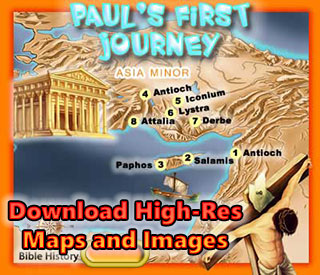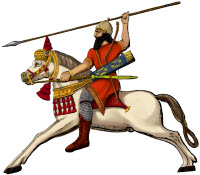|

|
|
|
|
How Did the Israelites Settle in the Promised Land?
The journey of the Israelites to the Promised Land is one of the most significant stories in the Bible. It is a tale of faith, perseverance, and divine promise. According to the Hebrew Bible, the Israelites’ journey was not a simple migration but a long, arduous process that spanned generations, involving struggles, challenges, and miraculous events. This article will explore how the Israelites came to settle in the land promised to them by God, and the role of faith, leadership, and divine intervention in their journey.
The Promise of the Land: Abraham and the Covenant
The story of the Israelites’ settlement in the Promised Land begins with Abraham, one of the most important patriarchs in the Bible. In the book of Genesis, God makes a covenant with Abraham, promising that his descendants will inherit the land of Canaan (modern-day Israel, Palestine, and parts of Jordan). This promise is often referred to as the Abrahamic Covenant.
-
God’s Command to Abraham: God tells Abraham to leave his home in Ur of the Chaldeans (in present-day Iraq) and journey to a land that God will show him. Abraham, though uncertain of where he was going, trusted in God’s plan and set off with his family. The land they were promised, Canaan, was known for its fertility and strategic location at the crossroads of ancient civilizations.
-
Abraham’s Faith: The journey Abraham undertook was not just a physical one but also a journey of faith. Despite facing many hardships, including famine and conflict with local peoples, Abraham believed in God’s promise. The covenant was passed down to his son Isaac and then to Isaac’s son Jacob, who was later renamed Israel.
The Story of Jacob and His Sons: The Beginning of the Twelve Tribes
Jacob, or Israel, had twelve sons, who became the patriarchs of the Twelve Tribes of Israel. These tribes formed the core of the Israelite people. The Israelites’ story takes a dramatic turn when a famine forces Jacob and his sons to migrate to Egypt.
-
Joseph’s Rise in Egypt: One of Jacob’s sons, Joseph, was sold into slavery by his brothers and eventually rose to power in Egypt, serving as a vizier to the Pharaoh. During the famine, Joseph’s brothers came to Egypt for food, and after a series of events, Joseph revealed his identity. He invited his family to live in Egypt, where they prospered for a time.
-
Slavery in Egypt: Over the years, the Israelites multiplied in Egypt, but eventually, a new Pharaoh came to power who did not know Joseph. Fearing the growing number of Israelites, the Pharaoh enslaved them, forcing them into hard labor. This period of slavery would last for several generations.
The Exodus: Escape from Egypt
The Israelites’ eventual freedom from slavery is one of the most famous events in the Bible, known as the Exodus. God raised up Moses to lead the Israelites out of Egypt and back to the Promised Land. This event is foundational to the identity of the Israelite people.
-
Moses and the Ten Plagues: According to the Bible, God sent Moses to demand that Pharaoh release the Israelites from slavery. When Pharaoh refused, God unleashed a series of ten devastating plagues on Egypt, the most famous being the death of the firstborn sons of Egypt. The final plague led Pharaoh to finally let the Israelites go.
-
The Parting of the Red Sea: As the Israelites fled Egypt, they were pursued by Pharaoh’s army. When they reached the Red Sea, God parted the waters, allowing the Israelites to cross on dry land. Once they had crossed, the waters returned, drowning the pursuing Egyptian army. This miraculous event reinforced the belief that God was guiding and protecting the Israelites.
-
Wandering in the Desert: After leaving Egypt, the Israelites journeyed through the wilderness. This period lasted 40 years and was marked by a series of challenges, including lack of food and water. However, God provided for them with manna from heaven and water from a rock. During this time, Moses received the Ten Commandments on Mount Sinai, which became the foundation of the Israelites’ moral and religious laws.
Entering the Promised Land: Joshua’s Leadership
After the death of Moses, leadership passed to Joshua, one of Moses’ trusted aides. Under Joshua’s leadership, the Israelites were finally ready to enter the Promised Land. However, they were not the only inhabitants of the land, and their journey to settle there would not be without conflict.
-
Crossing the Jordan River: According to the Bible, God performed another miracle when He parted the waters of the Jordan River, allowing the Israelites to cross into the Promised Land on dry land, just as He had done at the Red Sea. This event was seen as a sign that God was with them as they prepared to conquer the land.
-
The Battle of Jericho: One of the first cities the Israelites encountered in the Promised Land was Jericho, a heavily fortified city. Joshua received instructions from God to march around the city walls for six days, and on the seventh day, the Israelites were to blow their trumpets and shout. When they did, the walls of Jericho miraculously collapsed, allowing the Israelites to capture the city. This victory demonstrated the power of God’s intervention in the Israelites’ journey.
-
Conquest and Settlement: Over the next several years, the Israelites fought various battles against the Canaanite kings and tribes to secure control of the land. The book of Joshua describes how the land was divided among the twelve tribes, each receiving its own portion of territory. The city of Jerusalem, however, was not fully conquered until much later, during the reign of King David.
The Role of the Judges and the Rise of the Kingdom
After the Israelites settled in the Promised Land, the land was divided, and each tribe was responsible for its own territory. During this period, there was no central government, and the Israelites were led by a series of judges, who were military and spiritual leaders. The judges, such as Deborah, Gideon, and Samson, helped the Israelites defend against their enemies and provided leadership.
-
The Era of the Judges: The period of the judges was marked by cycles of sin, repentance, and deliverance. The Israelites would turn away from God, leading to oppression by surrounding nations, but when they repented, God would raise up a judge to deliver them. This pattern is evident in the book of Judges.
-
The Demand for a King: As time passed, the Israelites desired a strong, centralized government, like the nations around them. They requested a king, and Saul was anointed as the first king of Israel. Saul’s reign marked the transition from the period of the judges to the establishment of the Israelite monarchy.
The Establishment of the Kingdom: King David and the Unity of Israel
Under King David, Israel was united into a single kingdom, and Jerusalem became its capital. David is considered one of the greatest kings in Israelite history, both for his military successes and his spiritual devotion.
-
Conquering Jerusalem: David conquered Jerusalem, which had previously been under the control of the Jebusites, and made it the political and religious capital of Israel. He also brought the Ark of the Covenant to Jerusalem, solidifying its status as the spiritual center of the nation.
-
David’s Legacy: David’s reign laid the foundation for the building of the First Temple in Jerusalem, which his son Solomon would construct. The kingdom of Israel reached its peak under David and Solomon, and the Israelites enjoyed a period of relative peace and prosperity.
Conclusion: The Promise Fulfilled
The Israelites' journey to the Promised Land is a story of faith, struggle, and divine intervention. From the covenant made with Abraham to the leadership of Moses and Joshua, the Israelites overcame numerous obstacles to settle in the land promised to them by God. Their story is one of perseverance, hope, and the belief that they were chosen to live in the land of Canaan, a land flowing with milk and honey.
The settlement in the Promised Land was not the end of the Israelites' journey, but it marked the beginning of their establishment as a people with a distinct identity, united under the banner of faith in the God who had brought them out of slavery and into freedom. Today, their story continues to inspire people of faith around the world.
Tags: Moses Joshua Exodus Ancient Israel history Ancient Israel Old Testament Teaching Bible history Bible history King David Israelites Promised Land Canaan Abrahamic Covenant Twelve Tribes Biblical Journey
Kid's Bible Maps
Bible History Online
The Geography of the Bible
© Bible History Online (https://bible-history.com)
Made by Network Local

Kids Bible Maps
About
Us
Contact Us
To
Parents
To
Teachers
Kids Bible Blog
Using Our Maps
Mission
Statement
Doctrinal
Statement
Instructions
Popular Bible Maps
The Journey of Abraham
Moses and the Exodus
Joshua and the Land
The Kingdom of David
The Kingdom of Solomon
Israel in Jesus' Time
Paul's First Journey
The Land of Israel
The Land of Egypt
The Land of Assyria
The Land of Babylon
The Land of Persia
The Land of Greece
The City of Rome
Noah's Ark and Mt. Ararat
The Tower of Babel
The Old Testament World
The New Testament World
Ancient Empires
Moses and the 10 Plagues
Ancient Peoples
The 10 Commandments
The 12 Tribes of Israel
The Ministry of Jesus
Bible Stories with Maps
Daniel in the Lions Den
David and Goliath
Baby Moses
Jesus and the Little Children
Coloring Book Images
Coloring Book
Donkey
Camel
Lamb
Noah's Ark
Noah's 3 Sons
Abraham
Sheep
Lion